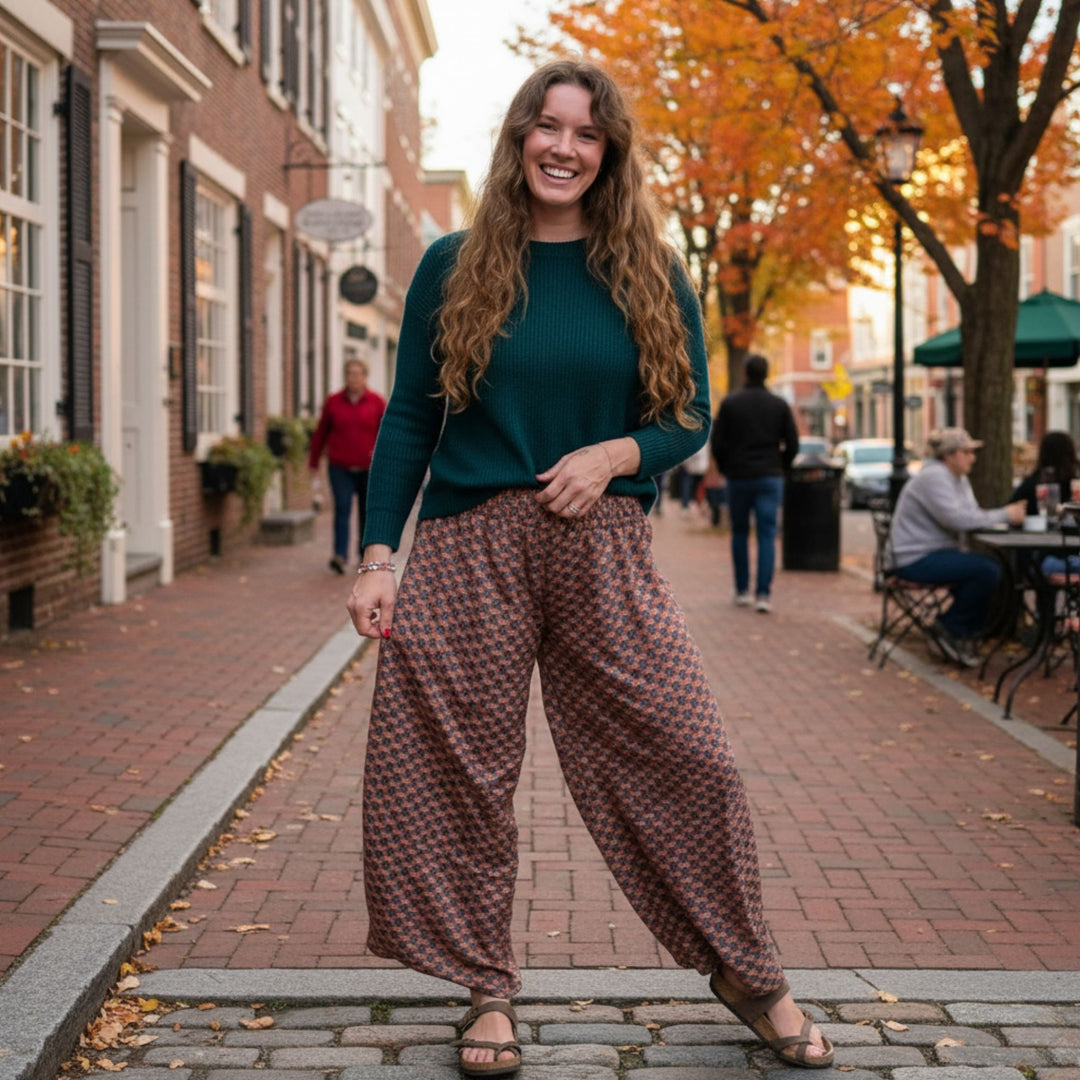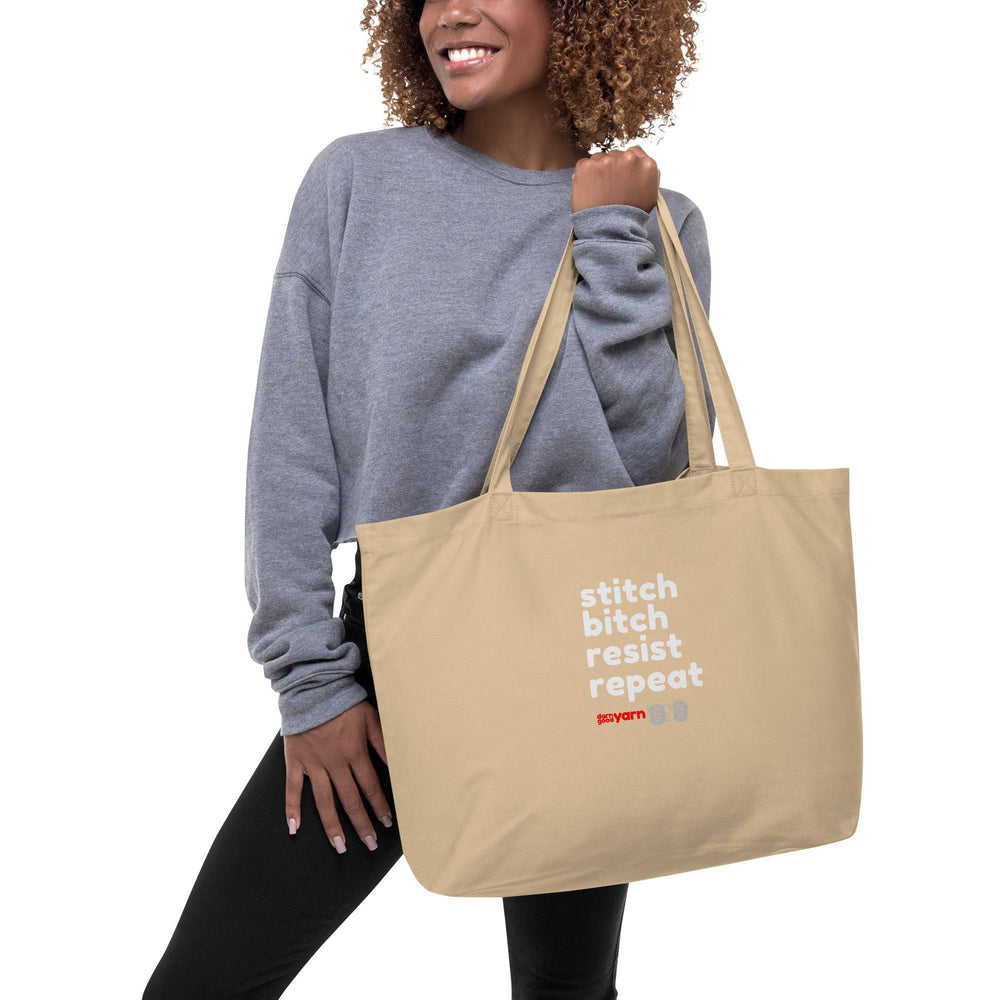Written by Michaela MacBlake Matthews
Want to unwind and release stress with a new creative hobby? Do you enjoy making homemade gifts for the people you care about? Learning how to knit is a great way to add color and joy into your life, all while creating one of a kind items you can use for years to come!
Supplies: What should a beginner knitter buy?
To get started, there are a few things you’ll need. Some, you probably already have at home, like a small pair of scissors, and a ruler.
Of course, knitting needles are a non-negotiable! You’ll need Straight Needles, Circular Needles or Double-Point Needles, and a Tapestry Needle to get started on your first project.
It’s also helpful to invest in some Stitch Markers, a Knitting Needle Gauge, and a Yarn Gauge Guide to help steady the process and keep you and your yarn on the same page!
The world of knitting has thousands of fun and ultra-useful gadgets available, like these Purple Speckled Ceramic Yarn Bowls, to keep your yarn unraveling smoothly as you work!
Really, getting started doesn’t have to be all that snazzy, but for some, it may help to indulge in a few extras to help inspire you along the learning journey.
That’s a darn good overview for a simple start, but aren’t we forgetting something…?
Oh yeah, YARN!
What kind of yarn should I use?
There are a few different weights of yarn, and we're not talking about setting the yarn on a scale. When talking about yarn, weight often refers to the thickness of an individual strand of yarn. Lighter weights such as lace or fingering are very thin, this can make them finicky to work with as well as a little challenging to see clearly. Heavier weights such as worsted or bulky are thicker which makes them easier to see and handle.
When you’re just starting to knit, Bulky Yarn may be an easier option to work with, because it works up very quickly and take fewer stitches to finish your first project.
As you start to get comfortable with those first few stitches, you may want to try one of our boxes Bulk Discount Yarn Packs, so you can really feel the difference of the different types of yarn that we have!
Or, try a Knitting Kit to take on a ‘wow-factor’ project that is easy to follow and great for beginners!
Most importantly though, at Darn Good Yarn we believe in yarns that are sustainable, and ethically sourced.

From the artisan to the person who packs our orders, we are inspired to deliver high-quality eco-friendly products that have saved 2,000,000 pounds of waste materials from landfills.
What is the most commonly used knitting needle size?
Size US 8, aka 5mm is the most common size of needle, because it works well with the most common type of yarn: worsted-weight. Check out our Ombre Knitting Needles for a dose of purple to get you started!
Different sizes of needles are used for different weights (thickness) of yarn, starting from weight 0 (very thin) all the way to 7 (thick)! Before you start your project, make sure that you're using the right sized needles for the yarn that you're using. Most yarn will have information about its weight as well as the suggested needle size printed on its label. Most patterns have suggested yarns and needle sizes to achieve the desired gauge measurements.
Try creating a swatch, or a small sample of knitting using the stitches that are going to be used in the final project. This will help you gain experience and confidence in the techniques you'll be using, as well as help determine whether you're using the correct needle for you! Using a ruler, measure the number of stitches and rows within a given area (often 2"x2" or 4"x4"), then compare with the gauge suggested in the pattern. If you have more stitches and rows than suggested, try selecting a larger needle. If you have fewer, try selecting a size smaller needle. If you use the wrong sized needles, you run the risk of ruining your gauge or even worse - your whole project!
When selecting a needle to work with, it can be more important to look at your gauge rather than what needle size is suggested by the pattern or yarn label. Some people knit very loosely, and others knit very tight. If you knit very tight for example, you may need to select a larger needle than suggested to achieve the gauge indicated in the pattern.
Having the right gauge measurement is going to be more important for a garment than a scarf or dish cloth. A dish cloth that's comes out to be a little smaller than the pattern suggests is not a problem, but it can be very discouraging to make a sweater that doesn't end up fitting (trust me, I've done it more times than I'd like to admit)!

How do I start to knit?
Okay, so you have your needles, your oh-so-gorgeous and darn-good yarn… Now what?
As with all learning journeys, it can be a good idea to start small, and see how you feel. Some people like short, manageable projects, while others love a big challenge right from the start. No one knows you better than you, so take a look at some DIY options, and see what gets you excited! If it feels a bit out of reach, you can always use your dream project as a guide for what stitches to learn first!
Head over to the Tutorial Blog to gather some ideas for your first projects and knitting goals. There you’ll find full Step-By-Step instructions and material lists for a variety of patterns and projects.
Can I learn to knit on my own?
Absolutely! With a little help from the team here at Darn Good Yarn, you can learn to knit at your own pace, from the comfort of your own home. We love helping you create joy and abundance with every strand, so we’ve put together a YouTube Playlist of over 60 Stitches and techniques for you to practice!
Can knitting really help with anxiety?
Yes! Just like any new hobby or skill, getting started is the hardest part. Sometimes we put off starting new things and get caught up in ‘analysis-paralysis,’ worrying about if it’ll end up on the back burner, or if we’ll get the right supplies, or even be any good at this new (and at times, daunting) hobby.
…And then when we finally take the leap, we wish we started sooner.
It takes patience to work with fiber arts, and especially when you’re first learning how to work with the materials and patterns. Once you get into your groove, though, something magical happens…

Knitting has been proven to reduce anxiety, lower blood pressure, and relax the muscles. Pace is a full body experience, so when you find your rhythm in a pattern, your breathing and heart rate begin to follow suit. Working with the hands also keeps your mind engaged, and makes much better use of those stray background thoughts which might otherwise drift to stressors.
When ‘unwind’ and ‘unravel’ become one, that’s when you’ll see why it’s a lifestyle.
Need help making time to craft?
If you’d like a little nudge to help keep you inspired and creating on your knitting journey, sign up for our Yarn Of The Month® Club, and for just $10 a month you can have the excitement of fun yarn delivered to your door.
Yarn of the Month® is an easy way to explore fabulous yarns that are custom curated by the award-winning team at Darn Good Yarn. Each month you get access to our groups, special discounts and more!

"Mac" is on the Lifestyle Team here at Darn Good Yarn, and loves taking a ‘teach a man to fish’ approach to creative therapy. She is certified in neuro-linguistic programming, and is also the surreal artist and author behind Surrealismac.
 Rewards
Rewards


 Yarn of the Month Club
Yarn of the Month Club
















